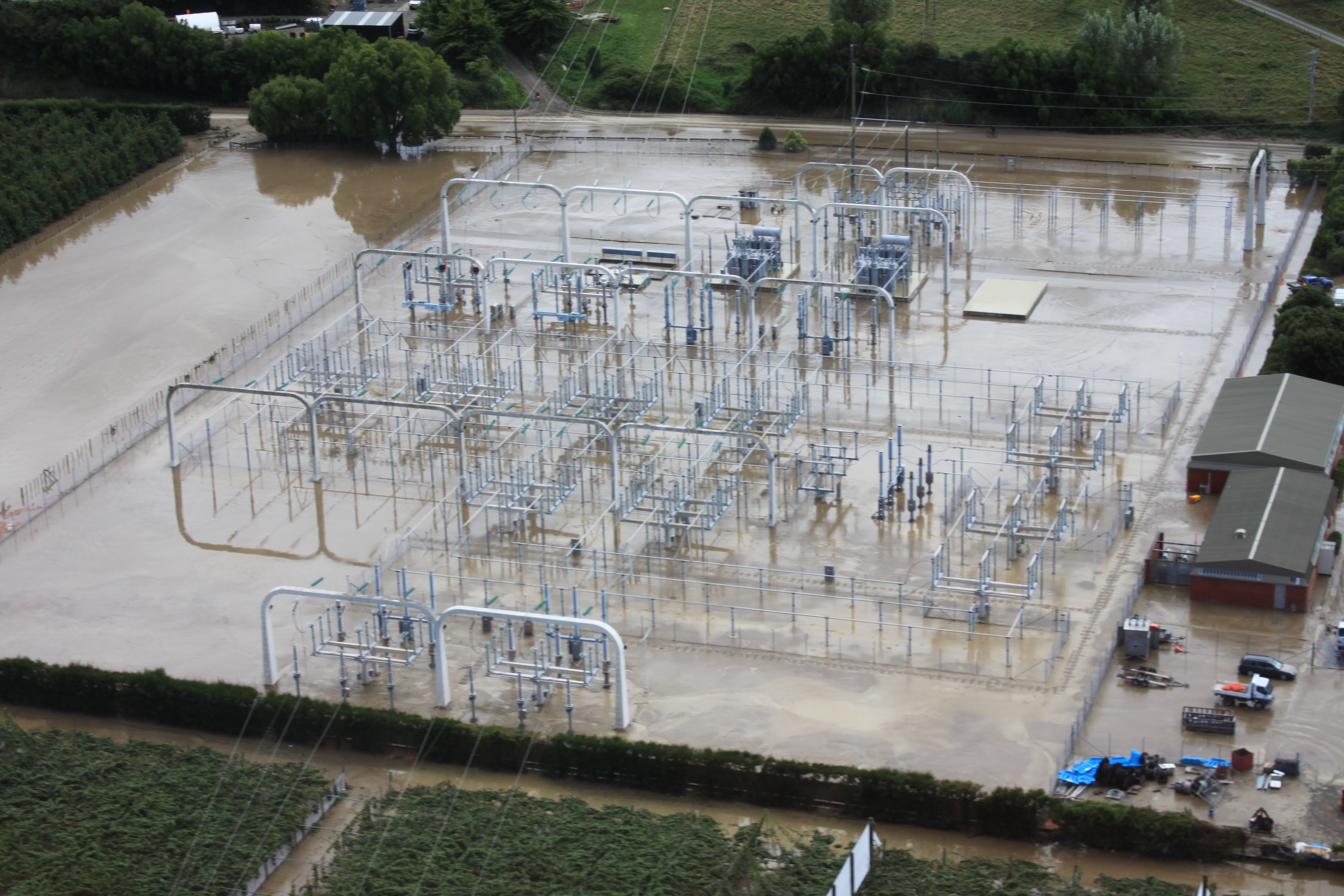AWARDS FINALIST: Unison & Transpower - cyclone recovery

Following unprecedented damage to electricity infrastructure in the wake of Cyclone Gabrielle, Unison and Transpower were faced with the challenge of restoring power to Hawke’s Bay.
Unison and Transpower believe they demonstrated collaboration, innovation, technical expertise and community engagement at its best, to successfully restore the region’s network.
With the region cut off from the rest of the county, flooding at the Redclyffe substation meant that the main electricity supply to Hawke’s Bay was down and more than 200,000 people were without electricity.
Unison and Transpower took urgent action to develop solutions pushing beyond the traditional asset management approach of ‘fix and repair’. Teams worked rapidly to develop a strategic response plan to restore supply.
Early communication with local authorities, civil defence and the public that outages could extend into weeks set clear expectations early on the likely response timeframes, and enabled communities to prepare for extended periods without power.
Helicopter aerial surveys enabled the team to assess the damage, identify accessible network assets and prioritise immediate repair as well as providing vital intelligence to engineering and operations teams to develop a strategy.
Progress
Transpower and Unison collaborated from day one to begin restoring supply, progressively connecting more customers in the first week post-cyclone. Most of urban Napier and Hawke’s Bay had power restored by the end of that first week.
Briefings were held regularly, and twice-daily progress reports, challenges and plans were delivered across multiple channels to keep stakeholders informed and provide visibility of both immediate and future restoration progress and plans. Graphics and maps were developed and shared widely to visually illustrate which parts of the region were restored, due for restoration or generation over the coming days, and those that still required a plan.
A regional 110 kW contingency plan, developed between Contact Energy, Unison, Transpower and Genesis Energy, was enacted and with switching completed 20 MW of supply was available within two and half hours after the loss of supply.
Transpower was then able to liven its Fernhill-Tuai circuit, allowing Fernhill to be increasingly supplied by generation from Tuai, increasing the supply available. Unison livened two zone substations in Hastings by the end of day one and another three by the end of day two.
With limited supply available through Tuai and a lot more power available from the south through Whakatu the decision was taken to work on both solutions at the same time.
Genesis restarted generation at Tuai, enabling Transpower to synchronise the Tuai hydro generators to the 110 kV system, as a precursor to restoring grid supply to Tairāwhiti from Tuai, which was providing about 10 MW from midday on the first day of the recovery.
Priorities
Power restoration to critical sites and urban areas was prioritised, while repairs to the Redclyffe substation were deprioritised.
Transpower and Unison recognised that if Redclyffe could be temporarily decoupled, power could be diverted through to Whakatu substation which could act as a node for supplying grid power to connections in Hastings and Napier.
Teams worked on a bypass solution to enable supply to Whakatu, which would connect a 220-kW circuit from Tauhara through Redclyffe and onto Whakatu. Extensive changes were made to physical protection and current transformer settings at Tauhara, Redclyffe and Whakatu.
Transpower began digging its way into Redclyffe, and the bypass was completed less than 80 hours after Redclyffe was flooded, providing sufficient capacity to supply a large part of the region on reduced security.
While the temporary bypasses were being built, Unison contractors focused on making repairs to the wider network across Napier’s urban areas, to ensure the local network was ready to accept the supply. Focus then turned to rural communities.
One of Unison’s key rural substations at Tutira suffered extensive damage and work to repair this substation, along with the rest of the rural network, continued to be challenged by a lack of telecommunications and limited access.
Unison representatives visited remote areas by air to meet communities face-to-face, assess the scale of damage, understand local needs and develop plans in partnership with communities.
Unison moved generators and supplied fuel to those communities where network repairs would take an extended amount of time.
Two further substations on Unison’s network at Eskdale and Awatoto suffered permanent damage. Both have been brought back into service using temporary solutions.
Complete restoration of the Hawke’s Bay rural network took two months.
The Network Initiative of the Year Award category is sponsored by Utilities Disputes